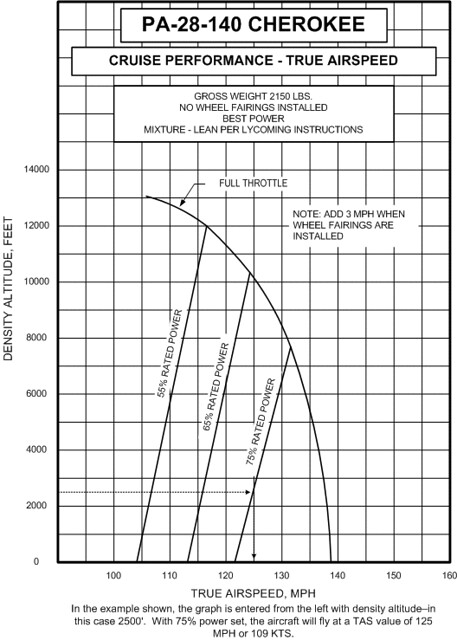Justin M
Line Up and Wait
- Joined
- Oct 23, 2016
- Messages
- 815
- Display Name
Display name:
JM
Hi.
In the 1969 Cessna 182M I fly, I can cruise at about 140 MPH indicated at 5,500. I use 23 MP (full throttle) and 2350 RPM and lean rich of stumble. The plane is normally aspirated. I use rudder trim to keep the ball centered once in cruise. I don't have a useful EGT indicator. I do have a carb temp indicator that works. There is no GPS in the plane.
I want to minimize flight time and minimize fuel usage. Do you have any advice?
If I climb to 7500 or 9500, my MP reduces due to air pressure. My indicated air speed is less too.
Assuming that winds aloft have no impact on ground speed, what is the best altitude to fly at? Is it better to climb to 9500 or to stay at 5500?
I try to use flight aware to gauge speed to altitude ratios, but since the data reflects ground speed, I can't calculate tailwind/ headwind factor and eliminate it.
If there's another thread on this topic, I'd be happy to read it too. My search turned up nothing.
Justin
In the 1969 Cessna 182M I fly, I can cruise at about 140 MPH indicated at 5,500. I use 23 MP (full throttle) and 2350 RPM and lean rich of stumble. The plane is normally aspirated. I use rudder trim to keep the ball centered once in cruise. I don't have a useful EGT indicator. I do have a carb temp indicator that works. There is no GPS in the plane.
I want to minimize flight time and minimize fuel usage. Do you have any advice?
If I climb to 7500 or 9500, my MP reduces due to air pressure. My indicated air speed is less too.
Assuming that winds aloft have no impact on ground speed, what is the best altitude to fly at? Is it better to climb to 9500 or to stay at 5500?
I try to use flight aware to gauge speed to altitude ratios, but since the data reflects ground speed, I can't calculate tailwind/ headwind factor and eliminate it.
If there's another thread on this topic, I'd be happy to read it too. My search turned up nothing.
Justin


